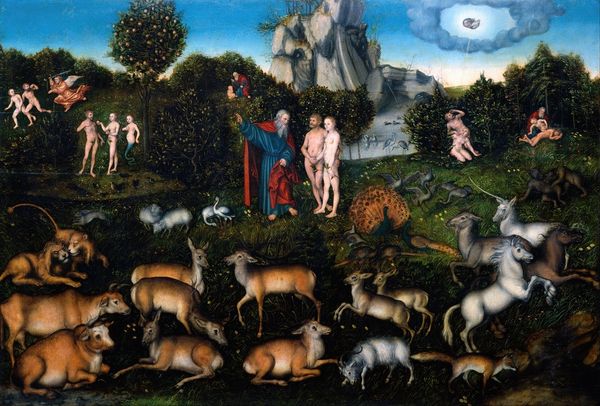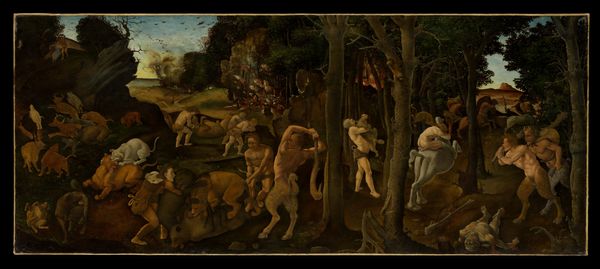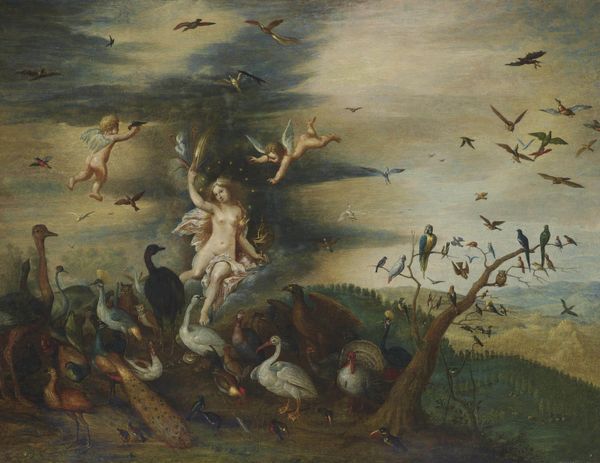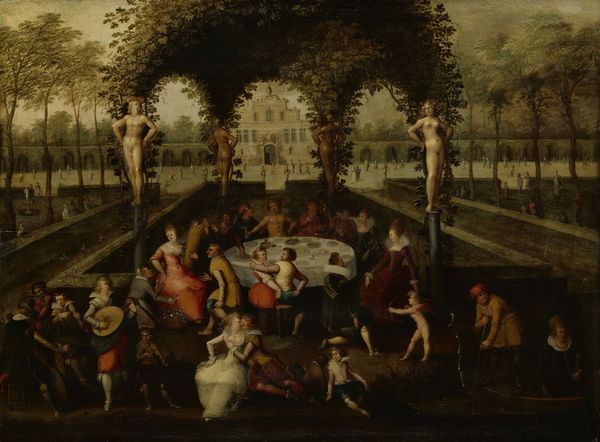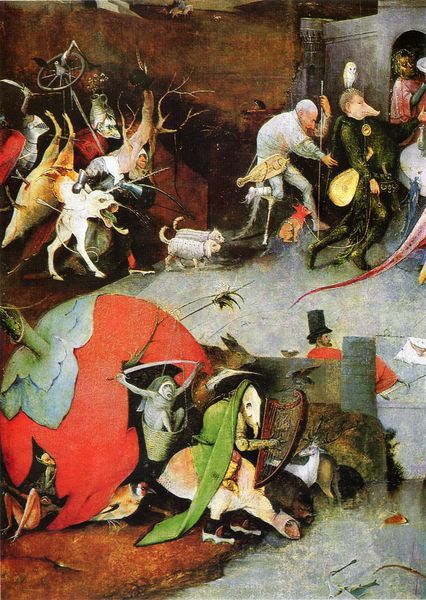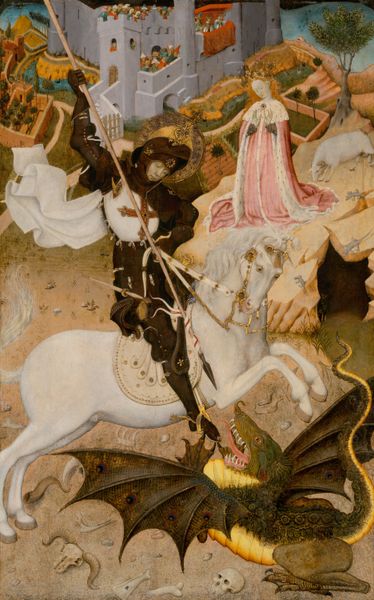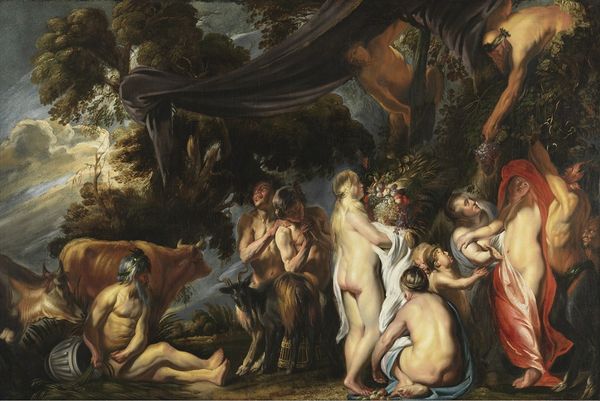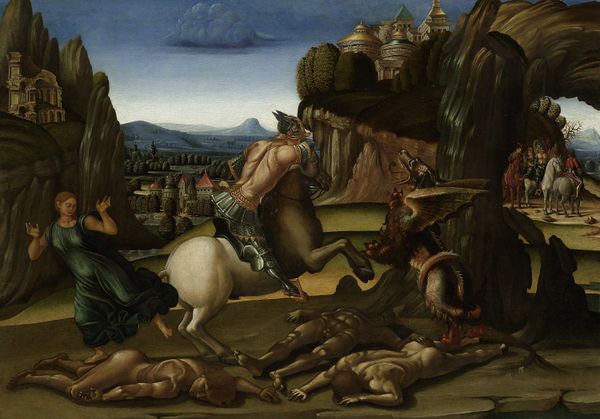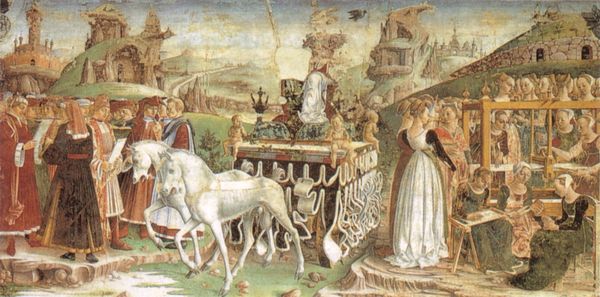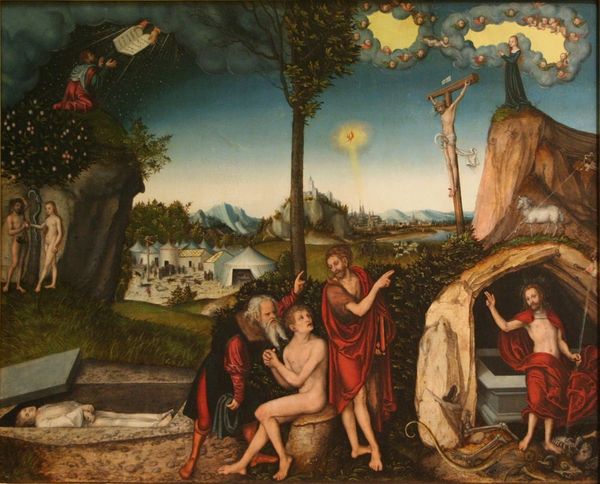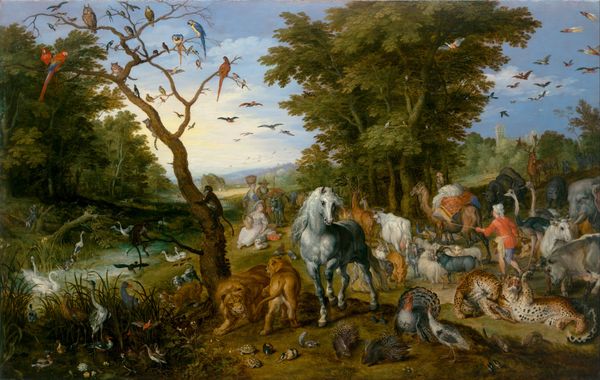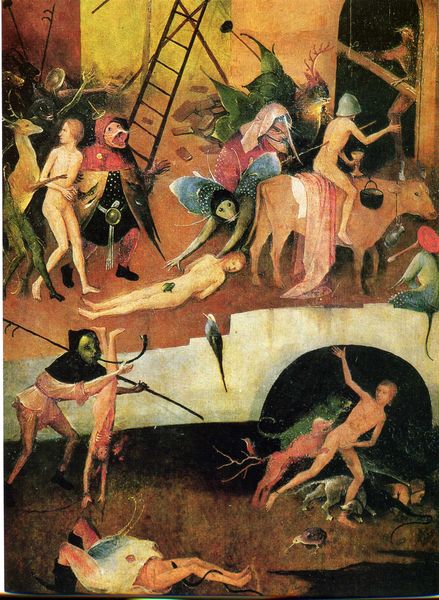
tempera, oil-paint
#
gouache
#
tempera
#
oil-paint
#
landscape
#
figuration
#
oil painting
#
mythology
#
history-painting
#
italian-renaissance
Dimensions: 65.5 x 54.5 cm
Copyright: Public domain
Pisanello's "Vision of Saint Eustace" was likely made in the 1430s or 40s, using tempera and oil on wood. This choice of material is significant. Tempera, made from pigment mixed with egg yolk, creates a matte surface and allows for precise detail – visible here in the rendering of the animals and Eustace's elaborate costume. The addition of oil gives the painting a richer luminosity, enhancing the sense of depth and atmosphere. Pisanello would have applied these paints in thin layers, carefully building up the image through a labor-intensive process. The painting's material execution contributes to its status as a luxury object, made for a wealthy patron. The costly pigments, the artist's skill, and the sheer time required for its creation all speak to a culture where art served as a marker of social status. And even the wood panel itself, carefully prepared and smoothed, would have been a valuable commodity. This reflects the broader economic systems of the Renaissance, where artistic production was interwoven with patronage, trade, and class distinctions.
Comments
No comments
Be the first to comment and join the conversation on the ultimate creative platform.
